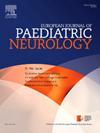结节性硬化症复合体的死亡率:目前的认识
IF 2.3
3区 医学
Q3 CLINICAL NEUROLOGY
引用次数: 0
摘要
结节性硬化症(TSC)是一种多系统神经皮肤疾病,由肿瘤抑制基因TSC1和TSC2功能变异的致病性丧失引起。由此产生的错构瘤由于局部组织的破坏而带来重大的医疗风险。已知TSC的死亡风险升高,但直到最近才有多项研究评估了TSC死亡的具体原因。方法对截至2024年12月15日,PubMed和谷歌Scholar上所有可用的关于TSC死亡率的研究进行批判性文献综述,检索词为“TSC”、“结节性硬化症”、“死亡率”、“死亡”和“预期寿命”。结果:我们确定了13项研究,报告了6735例TSC患者的411例死亡。数据通常是不完整的,在许多情况下,死亡原因是从死亡证明获得的。在11-45年的平均时间间隔内,每100个人的粗死亡率为1.4至13.8。标准化死亡率或危险比(相对于对照组)范围为3.0至4.9(平均4.3)。平均预期寿命为66.2岁,而普通人群的平均预期寿命为81.8岁。在报告一般TSC人群具体死亡原因的7项研究中,6/7(85%)的研究将肾脏或中枢神经系统疾病作为最常见的死亡原因。淋巴管平滑肌瘤病也被发现在成年女性中具有显著的死亡风险,心脏横纹肌瘤是新生儿死亡的主要原因。tsc相关的神经精神疾病相关的死亡率和发病率可能被低估。结论与一般人群相比,TSC的死亡率升高,中枢神经系统和肾脏疾病是最常见的罪魁祸首。需要进一步的队列研究来确定和描述TSC在疾病改善疗法时代的死亡风险。本文章由计算机程序翻译,如有差异,请以英文原文为准。
Mortality in Tuberous sclerosis Complex: Current understandings
Background
Tuberous Sclerosis Complex (TSC) is a multisystemic neurocutaneous disorder caused by pathogenic loss of function variants in the tumour suppressor genes TSC1 and TSC2. The resultant hamartomas confer significant medical risks by disruption of local tissues. Risk of mortality in TSC is known to be elevated, but only recently have multiple studies assessed specific causes of mortality in TSC.
Methods
A critical literature review of all available studies examining mortality in TSC was conducted using the terms “TSC”, “Tuberous Sclerosis Complex”, “mortality”, “death”, and “life expectancy”, in PubMed and Google Scholar, until December 15, 2024.
Results
We identified 13 studies that reported a total of 411 deaths from 6735 TSC individuals. Data were typically incomplete and causes of death in many cases were obtained from death certificates. Crude mortality per 100 individuals ranged from 1.4 to 13.8 over average intervals of 11–45 years. Standardized Mortality Ratios or hazard ratios (versus control group) ranged from 3.0 to 4.9 (mean 4.3). Mean life expectancy was 66.2 years compared to an average of 81.8 in the general population. In the seven studies that reported specific causes of mortality in the general TSC population, 6/7 studies (85 %) had renal or central nervous system disease as the most common cause of mortality. Lymphangioleiomyomatosis was also found to confer significant risk of mortality in adult women and cardiac rhabdomyomas were the dominant cause of neonatal mortality. TSC-associated neuropsychiatric disorders-related mortality and morbidity may be underestimated.
Conclusion
Mortality in TSC is elevated compared to the general population, with central nervous system and renal disease most frequently culpable. Further cohort studies will be required to establish and characterize the risk of mortality in TSC in the age of disease-modifying therapies.
求助全文
通过发布文献求助,成功后即可免费获取论文全文。
去求助
来源期刊
CiteScore
6.30
自引率
3.20%
发文量
115
审稿时长
81 days
期刊介绍:
The European Journal of Paediatric Neurology is the Official Journal of the European Paediatric Neurology Society, successor to the long-established European Federation of Child Neurology Societies.
Under the guidance of a prestigious International editorial board, this multi-disciplinary journal publishes exciting clinical and experimental research in this rapidly expanding field. High quality papers written by leading experts encompass all the major diseases including epilepsy, movement disorders, neuromuscular disorders, neurodegenerative disorders and intellectual disability.
Other exciting highlights include articles on brain imaging and neonatal neurology, and the publication of regularly updated tables relating to the main groups of disorders.

 求助内容:
求助内容: 应助结果提醒方式:
应助结果提醒方式:


